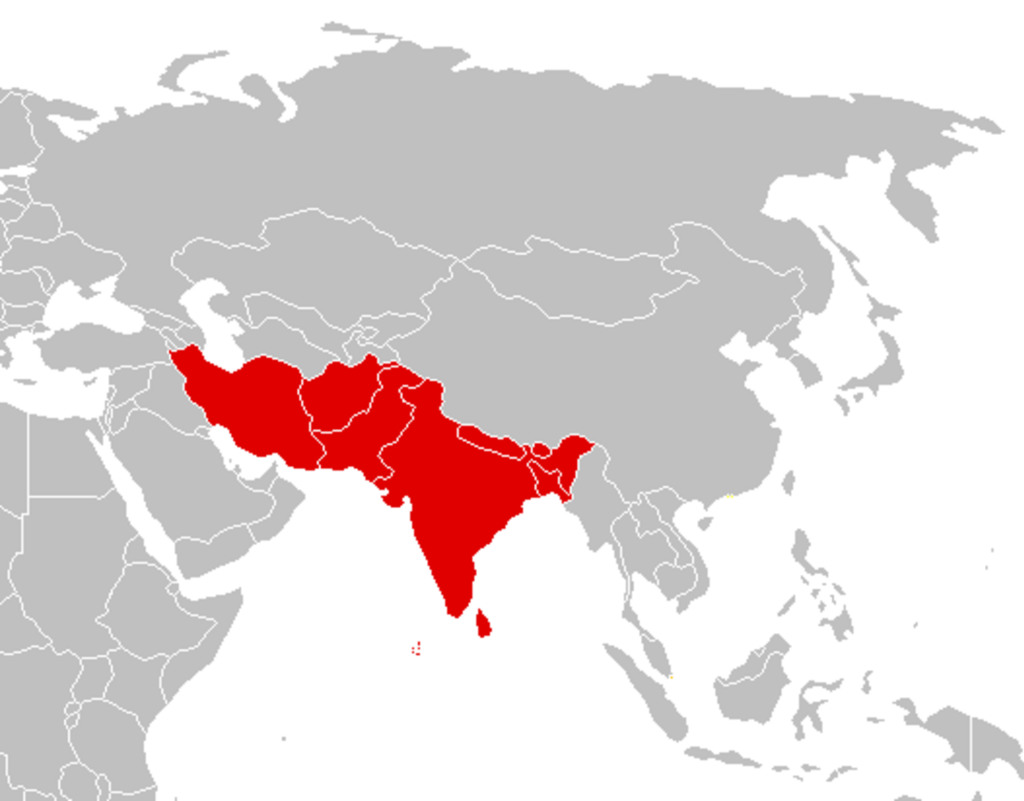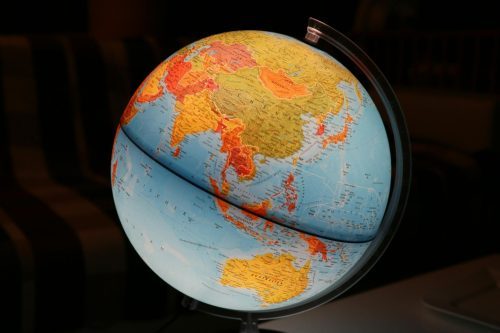
South Asia, often referred to as the Indian subcontinent, is one of the most culturally diverse and historically rich regions of the world. It is home to some of the world’s earliest civilizations, powerful kingdoms, and modern nations with vibrant economies and populations. The region is strategically important, not only because of its geographical position linking East Asia, Central Asia, and the Middle East, but also because it houses nearly a quarter of the global population. South Asia has eight recognized countries, each with its unique cultural traditions, languages, and political systems, and each country is represented by its capital city, which serves as the administrative, cultural, or economic hub. In this article, we provide a comprehensive overview of List of Countries in South Asia and their capitals, exploring their geographical position, political significance, and historical context.
Meaning of South Asia
South Asia is a geopolitical and geographical region located in the southern part of Asia. It is bounded by the Himalayas in the north, the Indian Ocean in the south, and surrounded by Central Asia, East Asia, and West Asia. The region is largely defined by history, culture, language, and religion, with India often being considered the central country of South Asia due to its size and influence.
The countries commonly recognized as part of South Asia include Afghanistan, Bangladesh, Bhutan, India, Maldives, Nepal, Pakistan, and Sri Lanka.

List of Countries in South Asia and Their Capitals
| Country | Capital City | Key Notes |
|---|---|---|
| Afghanistan | Kabul | Largest city and cultural hub of Afghanistan |
| Bangladesh | Dhaka | Densely populated, major industrial and political center |
| Bhutan | Thimphu | Unique Himalayan capital, no traffic lights |
| India | New Delhi | Political and administrative capital of India |
| Maldives | Malé | Island capital known for its small size and density |
| Nepal | Kathmandu | Historic city located in the Himalayas |
| Pakistan | Islamabad | Planned capital, known for its greenery and modern design |
| Sri Lanka | Sri Jayawardenepura Kotte (administrative), Colombo (commercial) | Two-capital system |
Largest Countries in South Asia by Area
| Country | Capital | Area (km²) |
|---|---|---|
| India | New Delhi | 3,287,263 |
| Pakistan | Islamabad | 881,913 |
| Afghanistan | Kabul | 652,230 |
| Nepal | Kathmandu | 147,516 |
| Bangladesh | Dhaka | 148,460 |
| Sri Lanka | Sri Jayawardenepura Kotte | 65,610 |
| Bhutan | Thimphu | 38,394 |
| Maldives | Malé | 298 |
DISCOVER ALSO: Countries in Asia that Speak English | Complete List
Country-by-Country Overview
1. Afghanistan – Capital: Kabul
Afghanistan is located at the crossroads of Central and South Asia. Its capital, Kabul, is one of the oldest cities in the world, with a history dating back more than 3,000 years. The city has been a major cultural, trade, and political hub for centuries, linking the Middle East with Asia. Kabul remains the largest city in Afghanistan and is the seat of the government, despite challenges related to security and development.
2. Bangladesh – Capital: Dhaka
Bangladesh is located to the east of India and is known for its fertile delta formed by the Ganges and Brahmaputra rivers. Its capital, Dhaka, is one of the most densely populated cities in the world, with millions of people living within a small area. Dhaka is the political, cultural, and economic center of the country, and it plays a crucial role in the global textile industry, particularly in garment production.
3. Bhutan – Capital: Thimphu
Bhutan, a landlocked Himalayan kingdom, is famous for its Gross National Happiness philosophy, which emphasizes well-being over economic wealth. Its capital, Thimphu, is a unique city that blends traditional Bhutanese architecture with modern development. Thimphu is also notable for being the only capital in the world without traffic lights, reflecting the country’s peaceful pace of life.
4. India – Capital: New Delhi
India, the largest country in South Asia by both area and population, is a major global power and the world’s largest democracy. Its capital, New Delhi, is part of the Delhi metropolitan area and serves as the seat of the central government. The city is known for its historical monuments such as the Red Fort, India Gate, and Qutub Minar, as well as being the center of India’s political activity. While New Delhi is the official capital, Mumbai is often referred to as the financial capital of India.
5. Maldives – Capital: Malé
The Maldives is a small island nation in the Indian Ocean consisting of around 1,200 islands, many of which are uninhabited. Its capital, Malé, is one of the smallest national capitals in the world by land area but is densely populated. Malé is the center of administration, commerce, and culture in the Maldives, and it is the gateway for tourism, which forms the backbone of the country’s economy.
6. Nepal – Capital: Kathmandu
Nepal, famous for being home to the Himalayas and Mount Everest, is a landlocked country situated between India and China. Its capital, Kathmandu, is a historic city with ancient temples, palaces, and cultural landmarks. It has long been a center of Hindu and Buddhist traditions. Kathmandu is also the largest city in Nepal and serves as the political, cultural, and economic hub of the country.
7. Pakistan – Capital: Islamabad
Pakistan is located to the northwest of India and shares borders with Afghanistan, Iran, China, and the Arabian Sea. Its capital, Islamabad, was built as a planned city in the 1960s to replace Karachi as the administrative capital. The city is known for its organized layout, modern infrastructure, greenery, and landmarks such as the Faisal Mosque. While Islamabad is the official capital, Karachi remains the financial and commercial hub of Pakistan.
8. Sri Lanka – Capitals: Colombo and Sri Jayawardenepura Kotte
Sri Lanka, an island nation south of India, is unique in South Asia for having two capitals. Colombo is the commercial capital and the largest city, known for its ports, trade, and tourism. On the other hand, Sri Jayawardenepura Kotte is the official administrative capital, where the parliament and government institutions are located. This dual-capital system helps balance political and economic functions within the country.
Characteristics of South Asia and Its Capitals
- Population Density – South Asia is home to some of the world’s most populated cities, with Dhaka, Delhi, and Karachi ranking among the largest urban areas globally.
- Cultural Diversity – The region is home to a wide variety of languages, religions, and traditions, making each capital city a cultural hub.
- Strategic Importance – Capitals such as New Delhi, Islamabad, and Kabul hold geopolitical importance due to their roles in regional politics and global affairs.
- Economic Hubs – Capitals like Dhaka, New Delhi, and Colombo act as major economic centers, driving the economies of their respective countries.
- Tourism and Heritage – Cities like Kathmandu, Thimphu, and Colombo are significant not only politically but also as centers of historical and cultural tourism.
STUDY ALSO: Major Geopolitical Regions Of Asia, Areas and Features
Conclusion – List of Countries in South Asia
South Asia is a diverse and dynamic region with a blend of ancient traditions and modern developments. Its eight countries represent a wide spectrum of cultures, religions, and economic systems, and each capital city serves as the focal point for administration, culture, and development. From the historic city of Kabul to the bustling modern center of Dhaka, and from the serene Himalayan capital of Thimphu to the island city of Malé, the capitals of South Asia reflect the rich diversity of this region. Understanding these countries and their capitals helps in appreciating the geopolitical and cultural importance of South Asia in the wider global context.
READ ALSO: Official Languages of Asian Countries | Complete List
Frequently Asked Questions (FAQ) – List of Countries in South Asia
1. How many countries are in South Asia?
South Asia consists of 8 countries: Afghanistan, Bangladesh, Bhutan, India, Maldives, Nepal, Pakistan, and Sri Lanka.
2. What is the largest country in South Asia by area?
India is the largest country in South Asia, covering over 3.28 million square kilometers.
3. Which is the smallest country in South Asia?
The Maldives is the smallest country in South Asia, made up of around 1,200 islands in the Indian Ocean.
4. What is the capital of Afghanistan?
The capital of Afghanistan is Kabul, which is also the country’s largest city.
5. Which South Asian capital is the most populated?
New Delhi, the capital of India, is part of the Delhi metropolitan area, one of the most populated urban regions in the world.
6. What is the capital of Bhutan?
The capital of Bhutan is Thimphu, which is notable for being the only capital in the world without traffic lights.
7. Which country in South Asia is landlocked?
Nepal and Bhutan are the two landlocked countries in South Asia.
8. What is the capital of Sri Lanka?
Sri Lanka has two capitals: Colombo (commercial capital) and Sri Jayawardenepura Kotte (administrative capital).
9. Which South Asian country is an island nation?
The Maldives and Sri Lanka are the two island nations of South Asia.
10. Why is South Asia geopolitically important?
South Asia is significant due to its large population, strategic location, cultural diversity, and economic growth potential.
